 Ten years have passed since ash dieback was first detected in the Peak District Dales Special Area of Conservation. In this guest blog Katie Brownbill introduces the LIFE in the Ravines project, which is leading the area’s woodland restoration efforts.
Ten years have passed since ash dieback was first detected in the Peak District Dales Special Area of Conservation. In this guest blog Katie Brownbill introduces the LIFE in the Ravines project, which is leading the area’s woodland restoration efforts.
Hiking through rugged landscapes carrying heavy gear and carefully tending to young saplings - this is the daily reality for our dedicated Woodland Restoration Workers. Whether there’s rain, sunshine or even snow, these teams work tirelessly to plant trees and restore vital woodland areas.
The Forestry Commission is supporting the LIFE in the Ravines project to restore woodlands affected by ash dieback in the Peak District Dales.
This five-year partnership is focused on revitalising the Peak District Dales Special Area of Conservation (SAC), which includes much-loved spots like Dovedale and Lathkill Dale. These steep-sided valleys aren’t just beautiful places for walking - they're ecological treasures providing refuge for wildlife in the face of climate change.

Why the Peak District Dales woodlands matter
This SAC offers something special: a variety of microclimates, soil types and humidity levels that create perfect habitats for rare species. Here you’ll find brimstone butterflies, peregrine falcons and yellow archangels.
Without healthy trees, this ecosystem is at risk of collapse.
There are also some well-loved nature spots within the SAC, making this restoration work not just an ecological necessity but also a vital effort to preserve landscapes cherished by visitors and local communities.
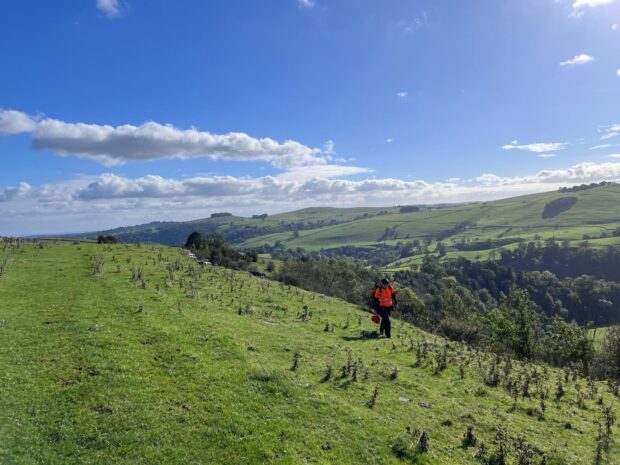
Understanding ash dieback
Ash dieback is caused by a fungus known as Hymenoscyphus fraxineus. This highly infectious disease spreads through airborne spores, travelling vast distances and quickly infecting large numbers of trees. Since it was first detected in Europe over 30 years ago, it has made its way to the UK, where it continues to cause widespread destruction.
For ash trees, infection often leads to a gradual weakening and eventual death. This results in reduced canopy cover, which decreases shade and lowers woodland humidity - two key factors in maintaining the health of woodland ecosystems. In areas like the Peak District Dales SAC, where ash trees are the dominant species, this loss poses a significant ecological threat.
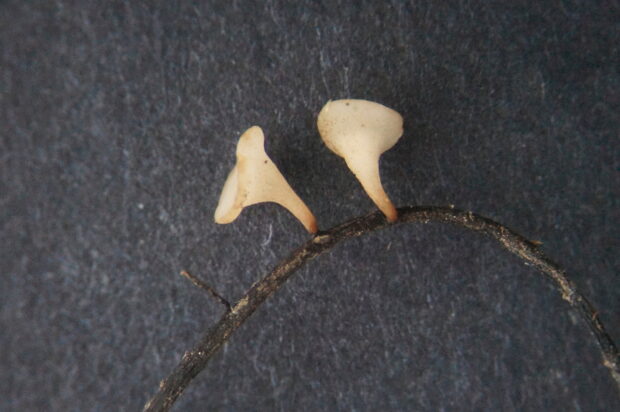
The impact of ash dieback in the Peak District Dales SAC
The arrival of ash dieback in the Peak District Dales SAC has been rapid and devastating. It was first detected in 2015, and by 2020 a staggering 99% of the SAC’s 600,000 ash trees were infected.
The loss of such a significant portion of the woodland’s canopy has left large gaps in its structure. Without intervention, these wooded areas would likely deteriorate, leading to habitat loss, increased soil erosion and reduced carbon sequestration.
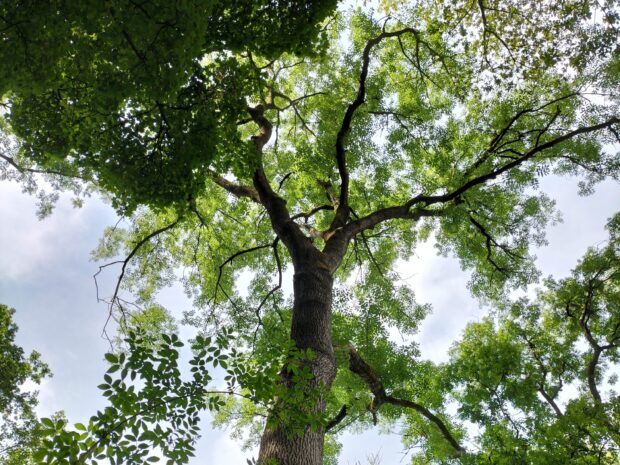
How we’re fighting back
Despite the challenges, the LIFE in the Ravines team has been working relentlessly to counteract the damage caused by ash dieback. Since 2020, we have planted over 70,000 trees, with many more to come.
We’re carefully selecting native, locally occurring species that can help rebuild the ecological integrity of these woodlands. The key species in our restoration efforts include:
- small-leaved lime
- large-leaved lime
- wych elm
These trees not only help replace lost canopy cover but also provide essential habitats and food sources for wildlife. By introducing a diverse mix of species, we are ensuring that the woodlands are more resilient to future diseases and climate challenges.
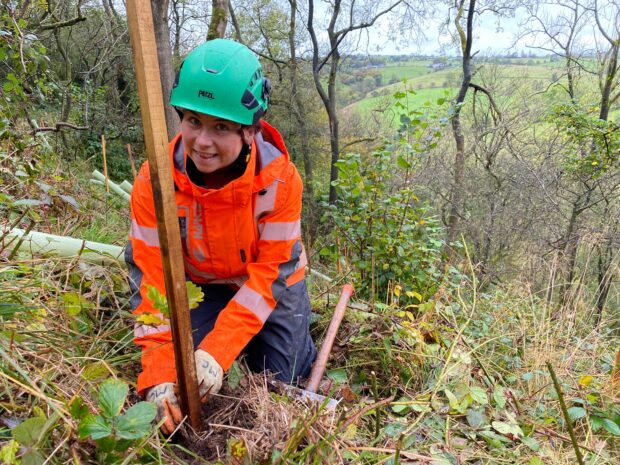
Next steps for LIFE in the Ravine
As tree planting season draws to a close, the team’s work is far from over. The next phase of the project includes:
- tidying up planting areas to give the newly planted saplings the best possible start
- ongoing surveys and monitoring to track tree growth and assess the success of different species
- preparing to plant more trees in the final planting season, which will begin in autumn 2025
- community engagement initiatives, including educational events that highlight the importance of woodland restoration
- sharing key findings with site managers and landowners who are also dealing with ash dieback in similar areas
The journey of woodland restoration is not an easy one, but every tree planted and every habitat restored brings us closer to a resilient, biodiverse future.
The restoration of these woodlands is a long-term effort, but with dedication and community support, we can ensure that the Peak District Dales SAC remains a thriving refuge for wildlife and a beautiful natural space for generations to come.
LIFE in the Ravines Project is funded by the EU LIFE Programme. The project is led by Natural England in collaboration with key partners, including Chatsworth Estate, The National Trust, Derbyshire Wildlife Trust, and Staffordshire Wildlife Trust.
Learn more about LIFE in the Ravines and their mission to revive these vital landscapes, and follow them on Instagram, Facebook and X.
Read the Forestry Commission’s guidance on Managing ash dieback in England on GOV.UK. To get tailored expert advice, get in touch with your local Woodland Officer.
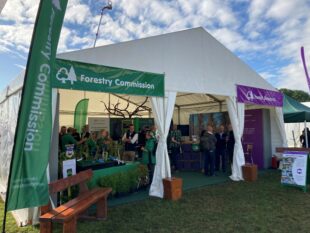


Leave a comment